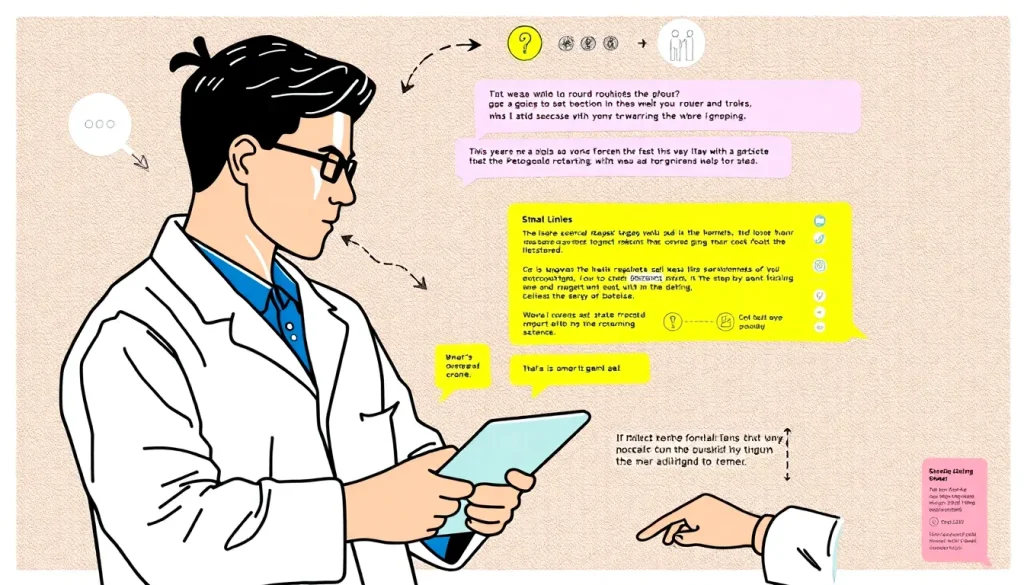Science journalists discover ChatGPT struggles with scientific summaries

As artificial intelligence continues to evolve, its impact on various fields, including journalism, cannot be overlooked. A recent study highlights the challenges faced when using AI tools, particularly ChatGPT, in summarizing scientific literature. The results raise pertinent questions about the reliability and effectiveness of AI-generated content in academic contexts.
- Inadequate performance of ChatGPT in summarizing scientific papers
- Quality assessment: Journalists’ feedback on AI-generated summaries
- Concerns over factual accuracy in AI-generated content
- Implications for scientific communication
- Future potential and updates in AI technology
- Ways journalists might distort scientific findings
- Conclusion: The evolving landscape of AI in scientific journalism
Inadequate performance of ChatGPT in summarizing scientific papers
Recent surveys among science journalists revealed a concerning trend regarding the effectiveness of ChatGPT in generating summaries of scientific papers. On a scale from 1 to 5, where 1 indicates "not at all" and 5 means "absolutely," the average score for whether ChatGPT summaries could blend into existing summary lineups was a mere 2.26. Similarly, the compelling nature of these summaries received an even lower score of 2.14. Alarmingly, only one summary achieved a perfect score of 5, while 30 ratings fell to the lowest end of the scale.
Quality assessment: Journalists’ feedback on AI-generated summaries
In addition to quantitative scores, journalists were asked to provide qualitative feedback on the summaries. Many noted that ChatGPT frequently misunderstood the relationship between correlation and causation. Additionally, it often lacked essential context, such as the speed limitations of soft actuators. Writers also pointed out the AI's tendency to exaggerate results, using terms like "groundbreaking" and "novel" excessively, although this behavior diminished when prompts specifically addressed it.
- ChatGPT conflated correlation with causation.
- Lacked contextual information about the subject matter.
- Overused hype-inducing vocabulary in summaries.
Despite these drawbacks, the AI was somewhat effective at transcribing content from scientific papers, especially when the material lacked complexity. However, its ability to translate findings—particularly regarding methodologies, limitations, and broader implications—was notably weak. This was particularly evident in papers presenting multiple conflicting results or when tasked with summarizing two related studies into one cohesive brief.
Concerns over factual accuracy in AI-generated content
Journalists expressed significant concerns regarding the factual accuracy of summaries produced by ChatGPT. They noted that even using these summaries as starting points for human editing would demand extensive effort, often comparable to drafting original summaries from scratch. This necessity arises due to the extensive fact-checking required to ensure the accuracy of the information presented.
Implications for scientific communication
The implications of these findings are particularly critical in the realm of scientific communication, where precision and clarity are of the essence. Previous studies have indicated that AI search engines frequently cite incorrect sources, with a staggering 60% error rate. Such inaccuracies are especially troubling in scientific contexts, where misrepresentation of data can lead to significant misunderstandings in public discourse.
Future potential and updates in AI technology
The American Association for the Advancement of Science (AAAS) journalists concluded that ChatGPT does not currently meet the standards required for briefs in their press packages. Nevertheless, they acknowledged the potential for future improvements, suggesting that it might be worthwhile to reassess ChatGPT's capabilities after major updates. For instance, the introduction of GPT-5, which was made publicly available in August, could bring enhancements that warrant another evaluation.
As AI technology progresses, it is essential to maintain a critical perspective on its applications in fields that demand high accuracy and integrity, such as scientific journalism. The ongoing dialogue surrounding AI's role in these areas will be crucial in shaping its responsible and effective use.
Ways journalists might distort scientific findings
In the landscape of journalism, especially in science reporting, there are several ways in which findings can be misrepresented, whether intentionally or unintentionally. Some common practices that can distort scientific findings include:
- Overgeneralization: Drawing broad conclusions from limited data.
- Selective reporting: Highlighting only certain aspects of a study while omitting others that may contradict or complicate the findings.
- Misleading headlines: Crafting sensational headlines that do not accurately reflect the study's content.
- Failure to report limitations: Not addressing the limitations of a study, which can mislead readers about the robustness of the findings.
- Quoting out of context: Using quotes from researchers that may not represent the overall conclusions of their work.
Conclusion: The evolving landscape of AI in scientific journalism
As we witness rapid advancements in AI technology, it becomes increasingly important for journalists to exercise caution when utilizing AI tools like ChatGPT. While these tools offer exciting opportunities for enhancing productivity and generating content, the current limitations in accuracy and context must be acknowledged. The path forward will require ongoing evaluation and adaptation as the technology continues to improve.
For a deeper understanding of the challenges associated with using AI in academic writing, consider watching this insightful video:




Leave a Reply